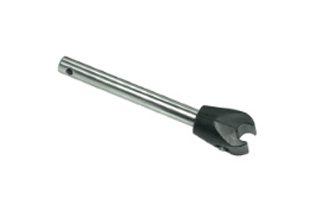Factory best selling Har-NHM Sprocket for Indonesia Factories
Factory best selling Har-NHM Sprocket for Indonesia Factories Detail:
Product detail pictures:
Our well-equipped facilities and exceptional top quality management throughout all stages of generation enables us to guarantee total buyer gratification for Factory best selling Har-NHM Sprocket for Indonesia Factories, The product will supply to all over the world, such as: Costa Rica, Bahamas, American Samoa, We set a strict quality control system. We've got return and exchange policy, and you can exchange within 7 days after receive the wigs if it is in new station and we service repairing free for our solutions. Be sure to feel free to contact us for further information if you have any questions. We are glad to work for every client.
What is P.T.F.E glass cloth tape?
P.T.F.E glass cloth tape usually refers to an adhesive backed P.T.F.E coated fabric which has either a Silicone or acrylic adhesive applied to one surface. The substrate, or woven glass cloth, usually used for these styles of tapes is referred to as a singles grade.
What’s the difference between a singles substrate and a twisted version?
Singles grades are closed weave substrates (non mesh types) with yarns that are not as tightly wound. More twisted versions are used for PTFE conveyor belts.
Singles substrates are used because they lay flatter that twisted version therefore are more easily covered. Because of this a smoother, high gloss, surfaces can be achieved with less P.T.F.E which also means it is a more cost effective option.
What type of adhesive backings do you offer?
The two main options for adhesive are acrylic and silicone which are applied to the PTFE glass cloth to create the tape. Acrylic has a higher level of tack and adhesion and has an operating temperature range of – 4 / + 177 degrees Celsius. Silicone adhesive has a lower level of tack and needs to be applied with a level of pressure. Silicone has a working temperature range of -73 / +240 degrees Celsius.
How does the adhesive stick to Teflon?
To apply any of the two adhesive systems to a prepared surface, chemical etching of the Teflon needs to take place. Etching one surface of the PTFE can be done by using sodium naphthalenide which is the most common method. Etching removes the fluorine atoms from P.T.F.E (Polytetrafluoroethylene) and creates a carbon based layer that increases the ability to bond and reduces the surface friction.
Is this product available in different colours?
We generally supply this is standard tan colour or occasionally in black, We also stock a silver product along with a blue. Blue is popular within the food processing industry,
https://www.industrysearch.com.au/Products/viewrecord.aspx?ID=78772
WAM Australia – SEPCOM® is a solids-liquid separating machine including a screw conveyor.
SEPCOM® is a machine composed by a feed device (feeding hopper or a compensator tank depending on whether the material is conveyed mechanically or pumped), a separator casing including a screw conveyor and a cylindrical screen, a compacted solid material outlet module and one or two separated liquid outlets. The drive unit and the basement complete the machine.
Function of SEPCOM® Solids-Liquid Separator
Using both principles of separation, by gravity and by mechanical pressing, the machine is designed to separate the liquid phase from the solid phase in a wide range of substances such as sludge, sewage, manure, solids-liquid mixtures, vegetables, processing waste and others, where the percentage of liquid inside the solid may be considerably different.
The separated solid and liquid phases can be handled in an easier and cheaper way. In some sectors this can even become a source of income.
OPERATION
The machine receives the material to be separated and conveys it using the screw conveyor inside the separator casing. The liquid phase is separated through the mesh of the cylindrical screen which encloses the screw conveyor. Along its path toward the exit, the material gradually separates progressively the less linked liquid and then the more strongly linked liquid until a plug of almost dry material has formed before the outlet. The plug is continuously expelled through the outlet diaphragm.
The machine will automatically find its balance of squeezing force depending on the material. Consequently, it can be used for a wide range of materials without the need for any manual adjustments.
Superb technology, perfect after-sales service and efficient work efficiency, we think this is our best choice.



